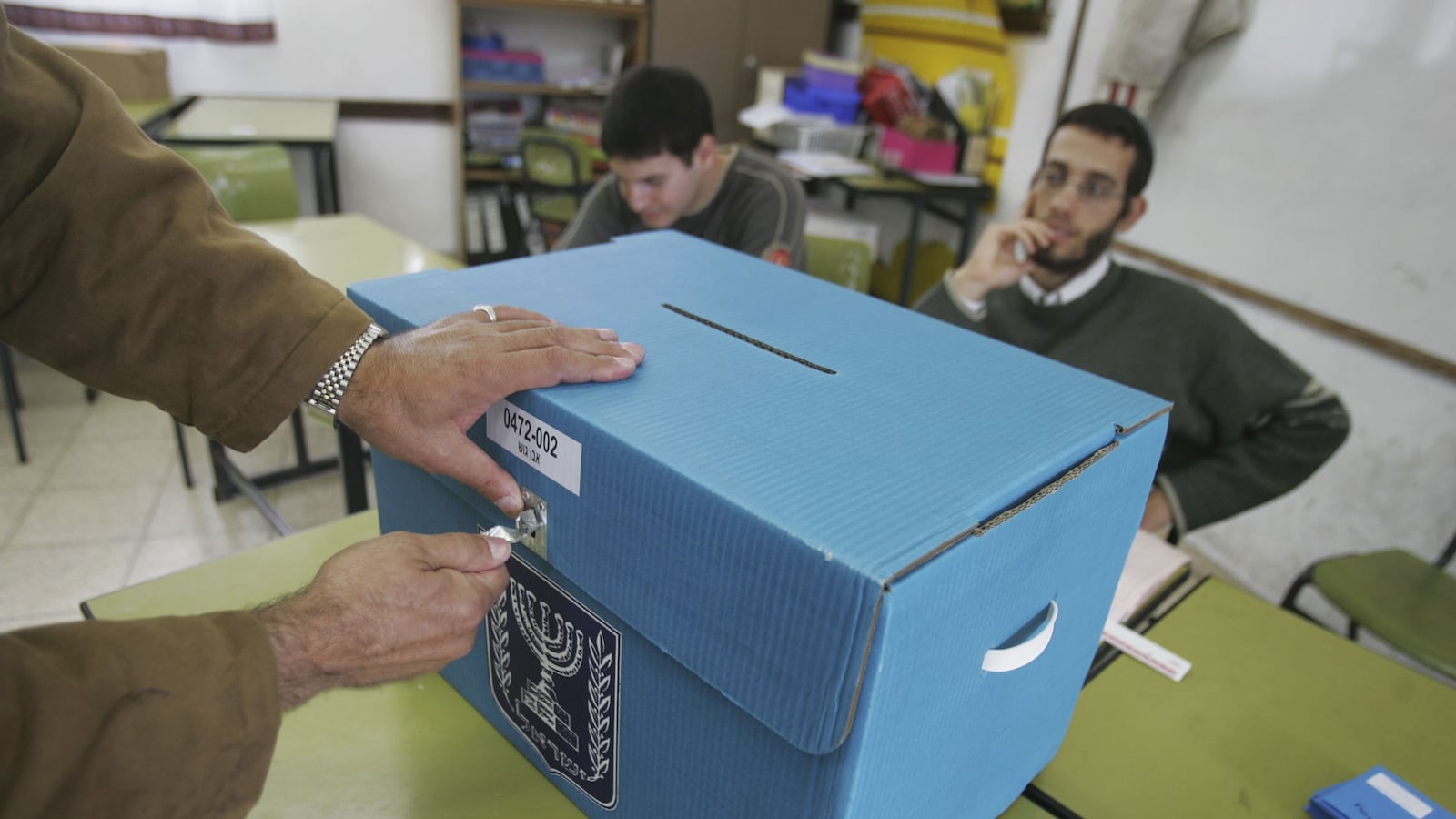The last Israeli polls are in before the election on January 22, and there’s a glimmer of hope for those concerned about a pro-settlement far-right government. Likud-Beiteinu is still the largest list, and Benjamin Netanyahu will probably be prime minister again, but the gap between the right-religious and center-left-Arab blocs is the smallest it’s been since the beginning of the campaign: 63 to 57 seats according to a Dahaf poll (other polls suggest a slightly bigger gap). This gives the center/center-left parties increased leverage in coalition bargaining, and weakens Jewish Home’s own negotiating position. In turn, this means the peace process with the Palestinians can be credibly revived.
I know this sounds panglossian, and others have made strong arguments against such a scenario. Michael Cohen and Larry Derfner both contend there really isn’t a viable left-wing party that could offset rightist trends in government. But rather than expect a change in direction, it might be more realistic to expect mitigation of the worst excesses of illiberalism and settlement-building that would otherwise dominate policymaking in a far-rightist government. This would create a foundation for parties like Labor and Meretz to build on, to strengthen their internal organization and expand their appeal to the population for the next election.

In other words, there may be a trade-off here between big short-term changes and laying the groundwork for slower, long-term shifts.Coalition bargaining in Israel is an uncertain business. It’s driven by greed and fear: the big parties struggling for support worry they are being out-bid by their rivals, while the smaller parties push for the spoils of government as hard as they can while playing the larger parties competing for their votes against each other. There’s lots of room for maneuvering under these conditions.
I’ve argued before (here and here) that given personal tensions between Netanyahu and Naftali Bennett and Netanyahu’s pragmatic opportunism versus Bennett’s ideological fervor, a far-right government anchored by Likud-Beiteinu and Jewish Home isn’t a guaranteed result. Bibi’s own weaknesses (a poorly-run campaign, detachment from the threats posed by rival parties, waffling between support for a Palestinian state and unprecedented expansion of settlements) open up more space for non-rightist parties to emphasize what they could do to strengthen the government’s domestic and international position.
On this basis it is possible that coalition bargaining will lead to a national unity-type of government that includes Likud-Beiteinu, a religious party or two (Shas or United Torah Judaism), and a couple of the center and center-left parties (Yesh Atid, Tzipi Livni’s Movement, or Labor).
In theory, Netanyahu could form a government without both Shas and Jewish Home. But it’s rare for an Israeli government to completely exclude the religious parties, and given demographic changes and the growing number of Orthodox politicians in all parties, it’s more likely than not that Netanyahu would prefer Shas/UTJ to Jewish Home. The religious parties themselves are not, contrary to popular assumption, beholden only to right-wing parties.
Shas is an Orthodox but not religious Zionist party—it is not committed to annexing the entire Land of Israel and building settlements in the West Bank like Jewish Home is. And all of the center/center-left parties have publicly stated their interest in retaining the main settlement blocs, and even a united Jerusalem. This will make them acceptable to broad swathes of the Jewish-Israeli population and to at least some individuals within Likud-Beiteinu and Shas.
In short, there are enough common interests and common challenges to all three groups (Likud-Beiteinu, Shas/UTJ, and the center/center-left) from Jewish Home and parties even further to its right (like Strong Israel) that it’s not an impossibility to conceive of a centrist government emerging from the election.






